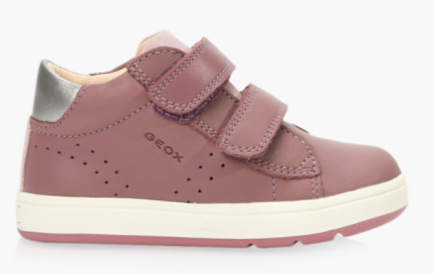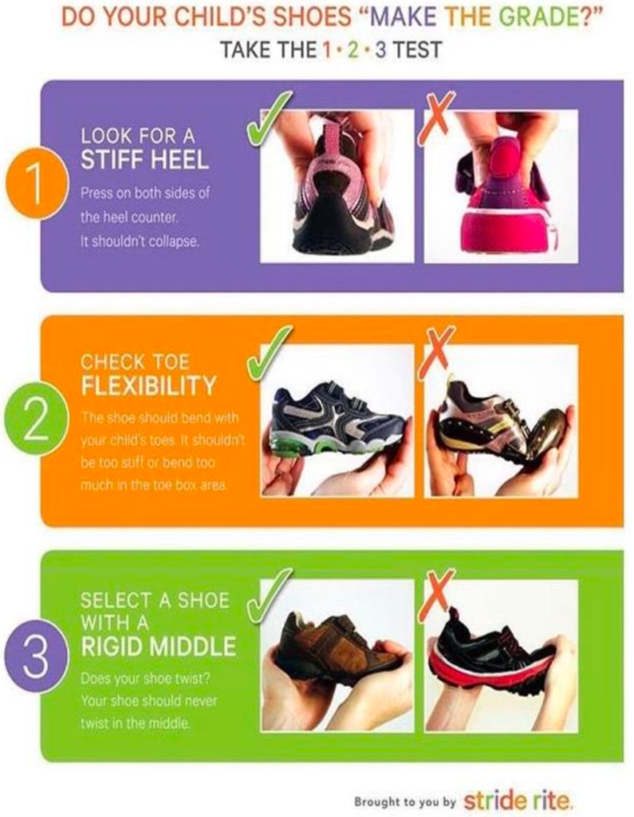When a baby is beginning to walk, foot formation has not finished and the ankle structure has not yet fully developed.
The baby’s foot is soft, chubby, and may appear flat in the first 2 years of life. While “barefoot is best” may be true for indoors and for children who are hitting their milestones on time, shoes can provide the foot with stability during outdoor play and for kids who need extra support.
Key Features in Shoes to Look for 
Soft Leather
Soft leather allows for easy movement but also provides needed support, allowing the foot to make minor adjustments when walking. It is breathable and prevents heat and moisture build up. If your child is learning to walk/stand, sometimes a higher cut ankle is recommended for kids with lower or higher muscle tone. However, if your child is mostly crawling, a lower cut ankle might be recommended.
Anti-slip Sole
A flexible anti-slip sole helps with balance and allows the shoe to mold to the foot. You should be able to bend at the toe portion with pressure from 1 finger but the whole shoe should not fold in half. Hand-me-down shoes don’t allow the shoe to mold to a baby’s unique arch and toe movements and aren’t typically recommended.
Firm Heel Counter
The heel should have a small, firm area to position the heel at the back of the shoe (called a heel counter). This part of the shoe guides the foot when upright, providing increased stability where the ankle needs to be stable. You should not be able to push it downward toward the sole.
Lots of Toe Room
The toe box should be wide and high, giving plenty of room for the toes to curl, grasp, and search the surfaces for normal balance reactions found in early walkers. If the toe box is too tight, it can cause discomfort or more falls because the active work of the toes is impeded.
Soft, Supportive Inner Arch
The inner arch of a new walker’s foot is still padded with extra baby fat, so a soft innersole under the arch is more supportive than a hard support device.
Velcro / Lace Ups
Laces or Velcro straps often provide more stability at the top of the shoe than slip on shoes. Many slip on shoes have too much flexibility and do not provide the same level of support.
Sizing
It is important for infants to wear shoes that fit properly. Shoes that are too small may result in discomfort, blisters, and prevent normal movement of the foot and ankle within the shoe. Shoes that are too big may result in discomfort and more frequent trips and falls. If your child reports discomfort or prefers to take the shoes off, inspect their feet for any redness, blisters, or callouses, which may indicate they aren’t fitting properly.
- Both feet should be measured each time you purchase new shoes
- If the feet are slightly different sizes, size up to fit the larger foot
- The feet should be sized when they are standing and weight bearing
- There should be a thumb width or half an inch between the tip of the toes and the end of the shoe, and they should be able to wiggle their toes
- If their heel is slipping out at the back of the shoe, it may be too big or not provide enough heel counter support






